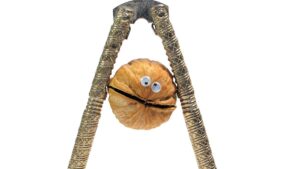HeraMED revolutionising maternity care with digital technology

HeraMED is digitising maternity care to help doctors remotely monitor patients. Pic: Getty Images
- HeraMED is working to revolutionise maternity care through digitisation
- HeraCARE platform helps healthcare providers monitor maternity patients remotely
- HeraMED has a four-point strategy for growth as active users reach record numbers
Special Report: HeraMED is on a mission to revolutionise maternity care through digitisation ensuring expectant and new mothers have access to cutting-edge technology for the wellbeing of themselves and their babies.
Medical data and technology company HeraMED (ASX:HMD) is redefining how pre and post-natal care is delivered and experienced with its medical grade, clinically-validated, end-to-end digital remote monitoring and maternity care platform HeraCARE.
HMD said HeraCARE enabled healthcare providers to monitor their maternity patients remotely with personalised care plans via a mobile App and a smart kit of connected devices including HMD’s clinically validated, in-home foetal and maternal heart rate monitor HeraBEAT.
CEO and managing director Anoushka Gungadin told Stockhead the platform ensures expectant mothers are engaged, informed and well-supported.
Gungadin said it enabled healthcare professionals to provide the highest quality care with early detection and prevention of potential risks.
While there have been advances in medical imaging and diagnostic testing for pregnancy, the actual standard of care has not altered substantially over generations.
“If you look at maternity and pregnancy the model of care has not changed really for 100 years,” she said.
“The way a pregnant woman visits her doctor and is told what she needs to do is pretty much what has been happening for our great grandmothers, yet we are living in the 21st century.”
Access to care reducing, cost increasing
Gungadin said access to maternity care for various reasons was also reducing globally with costs increasing.
She said there was a shortage in healthcare workforces and hospital closures, including maternity facilities.
“It puts more pressure on the healthcare system and has us needing to redefine how maternity and pregnancy care is delivered,” she said.
The major difference was moving from a hospital-centric model to a much more mother-centric model.
“We have our foetal heart rate model, which is HeraBEAT, which is where the company started as a hardware company,” she said.
“We’ve developed the HeraCARE platform to support the hardware and today that has really evolved and is providing various features and solutions.”
Monitoring pre and post-natal health
Gungadin said HeraCARE was a device agnostic platform which could connect to HeraBEAT but also to other devices which may be crucial such as blood pressure and glucose monitoring.
“We also have several surveys and measurements on the platform for instance we look at mental health in pregnancy but also post-delivery,” she said.
In the US, which is HMD’s main target market, the company has also embedded the Social Determinants of Health into its platform.
“This looks at where a mother lives, her socioeconomic background, living conditions which impacts health and access to care,” she said.
“All of this enables us to create customised care plans for mothers so someone with a low-risk pregnancy will have a very different care plan to someone with a high-risk pregnancy and conditions like hypertension or gestational diabetes.
“Those care plans are in the form of what measurements they need to take, how frequently, educational content which is customised to their condition.”
The company has a partnership with the world-renowned Mayo Clinic for its educational content.
Not replacing traditional medical care
Gungadin said protocol on the HeraCARE platform for each patient was set by the health providers.
“We just take what they would normally do or tell the patient and use technology to make the process ongoing and automated,” she said.
“Any measurement that is outside of expected norms will have an escalation of care so if blood pressure is too high the mother gets the message and so does her care team.
“In between visits there is continuity of care and medical staff can see if something is out of range enabling important clinical decisions to be made.”
Gungadin said while the patient has a mobile-friendly App, the care team has a dashboard helping them manage their patients.
“There’s full tele-medicine video conferencing and messaging capability, a traffic light system where the care team has all their patients and knows what needs to be resolved quickly,” she said.
“This is continuity of care complementing what a doctor is doing rather than replacing it by building efficiency and continuity of care in between visits.”
Four-point plan for growth
HMD has a four-point growth strategy as active users reach record numbers with more than 710 mothers currently having their pregnancies managed through HeraCARE, demonstrating its growing adoption.
The company reported more than 3800 expectant mothers had been onboarded to the HeraCARE platform as of September 30, 2024.
Gungadin said the first point of the strategy was commercialisation with a customer first focus. The company recently launched HeraCARE at Broward Health in Florida, which is one of the 10 largest public healthcare systems in the US.
Broward Health includes five hospitals across more than 50 locations and offices, and a team of over 1800 nationally recognised doctors delivering more than 5800 babies annually.
Gungadin said the second point of its growth strategy was building strong partnerships.
“We have a strategic partnership with Telstra Health and university partners,” she said.
The third point is attracting non-dilutive funding, such as grants and tax rebates.
“Through partnerships we have with universities we can apply for Medical Research Future Fund and other Federal Government grants,” Gungadin said.
“Plus the universities come with robust research infrastructures to support grant-funded projects and know-how around navigating complex grant application processes and compliance.”
Finally, HMD wants to grow its brand visibility.
“Our aim is to lift women’s health with maternity and pregnancy only the beginning,” Gungadin said.
“Women’s health has been overlooked for a very long time. While it is now more topical, there is still a lot more to do. Progress in this area will require unified collaboration across the ecosystem involving government, industry, academic institutions and community organisations.”
Strong leadership team
HMD has a strong leadership team with Gungadin, a trained economist with an MBA, taking over as CEO and MD in April following an extensive career spanning across four continents.
She is a Deakin University council member and the Australian lead for TiE Women, a global mentoring and investment platform for female entrepreneurs.
For over a decade Gungadin was based in Beijing where she headed up the finance and client department of an international French law firm.
Chief medical officer Dr Arturo Weschler is a trained medical doctor with an extensive career in medical informatics in the private and public healthcare sectors.
He co-founded a company in the field of digital health interventions and served as CIO at one of Israel’s largest healthcare organisations for more than a decade.
He was also a lecturer in medical informatics at Tel Aviv University.
This article was developed in collaboration with HeraMED, a Stockhead advertiser at the time of publishing.
This article does not constitute financial product advice. You should consider obtaining independent advice before making any financial decisions.

UNLOCK INSIGHTS
Discover the untold stories of emerging ASX stocks.
Daily news and expert analysis, it's free to subscribe.
By proceeding, you confirm you understand that we handle personal information in accordance with our Privacy Policy.








